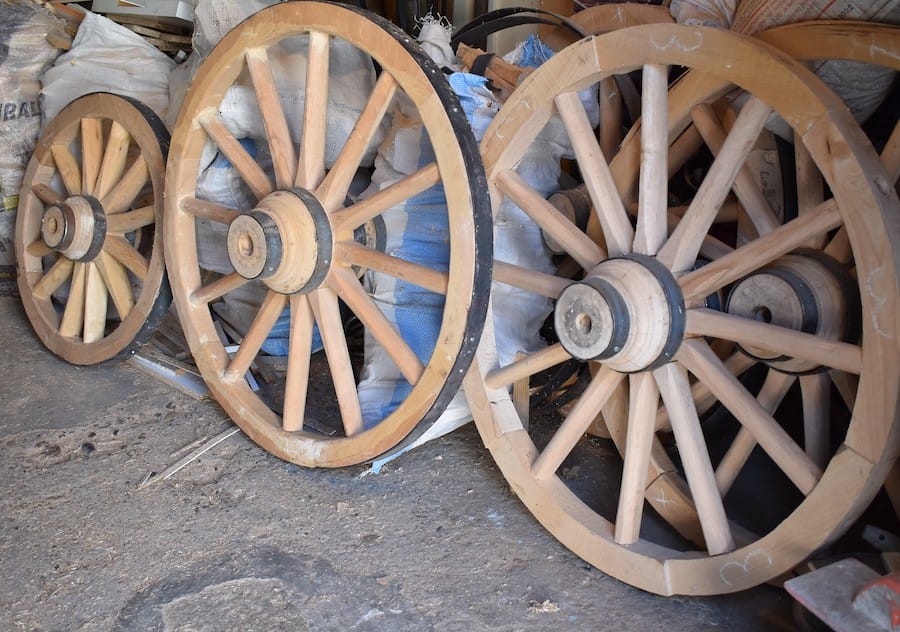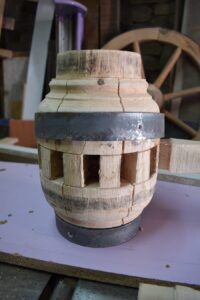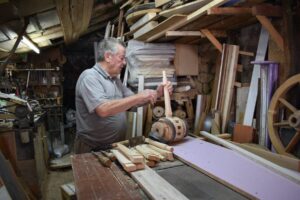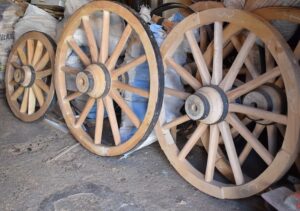Work on the cartwheel starts with making the wheel hub. The wheel of a cart is made from seasoned wood which can be beech, elm, oak, etc., i.e., hardwood. The timber is fixed on the lathe and manipulated until it takes the proper shape. It is next drilled, while the work continues with a skarpellë (chisel) to open up the slots, where the wheel elements will be finally fixed.
These elements are made of wood shaped with rounded rims and in the upper and lower part they are square shaped with adzes, to be tightly fixed into the open slots at the wheel hub. These are worked using a tool called “aeroplankë”. Aeroplanka is a type of two-handled plane or woodworking tool, which is used to shape various wooden elements. These elements are inserted into the wheel hub by tightening, without using adhesives. Usually, the square part is initially made a little bigger and then gradually engraved as need be with the aid of the adze.
The other section is worked into a cylindrical shape and inserted into the outer circle of the wheel. The elements are assembled in the form of sun rays configuration.
The outer part of the wheel, which is circular, comes in several arc sections. The number of arcs varies according to the wheel size, ranging from 4-8 arcs for a wheel.
Once these elements are assembled, a metal circle is attached to the outside of the wheel, which is made by the metalsmith or even by the carpenter himself. Fixing the metal elements on both the wheel hub and the outer section goes primarily through heating to expand and then fitted and left to cool down. Hence, they are more safely connected with wood elements. The outer circle is fixed with screws.
If used for carts, a metal funnel-shaped tube would be attached to the wheel axle to prevent friction.





